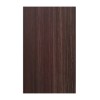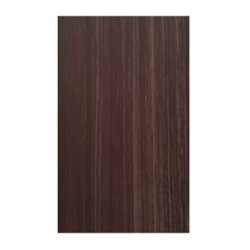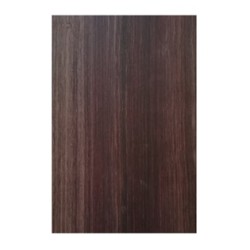East Indian Rosewood, Indian Rosewood

Family: Fabaceae - Order: Fabales - Class: Magnoliopsida
Scientific name: Dalbergia latifolia / emarginata
Trade name: East Indian rosewood, Indian Rosewood.
Also known as Bombay blackwood, roseta rosewood, reddish-brown rosewood, Indian palisandre and Java palisandre
Origin: India, Sri Lanka, Indonesia and Nepal.
Instrumental uses:
Guitar back and sides, fingerboards, bridges, head plates and bindings.
Tonal properties:
As tonewood, true rosewood one of the most used for guitar building, also probably the most used in classical guitars. Very responsive with a very good sound projection. Provides projection involving basses, less midrange but very well defined high frequencies with a very good note separation, almost the typical Hi Fi sound. Combines very well with Engelmann, German, Sitka Spruce, cedar, red cedar and redwood tops in classical guitars depending on the playing profile.
When used in fingerboards it has good sound transmission and note definition with a nice soft decay.
The grain is interlocked with a medium texture and this helps very much on the resonance and sustain overall.
Can be sometimes difficult to work but glues and finishes well.
Is stiff and very resistant with an average dried weight nearly of 52 lbs/ft3 or 830 kg/m3.
It is native to low-elevation tropical monsoon forests. Can be evergreen or deciduous, depending on the climate and the situation in which it grows. A medium to large-sized tree with a dome shaped crown of lush green foliage, it can grow up to 40 metres tall with a clear bole that can be more than 20 metres tall and 50cm in diameter.
The tree has grey bark that peels in long fibres. The heartwood is golden brown to a deep purplish brown, with darker brown/black streaks, the sapwood is pale white.
CITES status is protected under the Appendix II. Is reported on the IUCN Red List as vulnerable.
Gallery Photos




